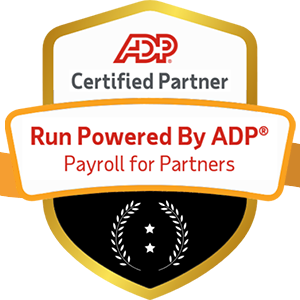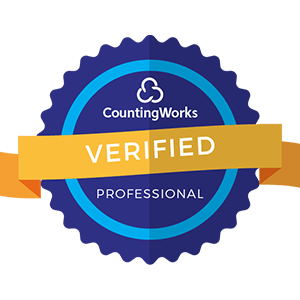
Very few businesses or industries around the world fail to benefit from a digital transformation. Human resources (HR), like many other aspects of business, is constantly evolving and adapting to the latest changes in digital technology. HR departments need to be tech-savvy and stay current with the latest developments.
Employees are the pillars of any organization, which is why human resources transformation has an impact on every aspect of your business. This guide will cover everything you need to know about HR digital transformation, including what it entails, how to embrace it within your company, and what to watch out for during the process.
Everyone who works for a large or mid-sized operation is familiar with the HR department, but many aren't clear about exactly what it does and why it's so important to the health of a business's overall work environment. A simple definition of HR is responsible for managing employees — a company's human capital — which includes hiring, onboarding, training, and laying people off. Its role in the business's success is a bit more complicated, though, especially if you look at what HR professionals actually do on a day-to-day basis.
Here's a deeper look at some key tasks performed by HR professionals.
One crucial HR function is to find suitable applicants for open positions. HR teams are involved with recruitment activities such as advertising for jobs, interviewing candidates, and making hiring decisions. Finding the right staff members is fundamental to organizations' success. It's therefore essential that HR is closely aligned with the mission, goals, and branding.
An integral aspect of a good HR operating model is to make sure workers are successfully onboarded and properly trained. In today's fast-paced business world, skills-related training isn't a one-time thing but rather an ongoing process that impacts business success.
People carefully consider benefits when applying for jobs. One survey found 60 percent of job applicants consider benefits a major reason to accept a job offer, and that 80 percent value improved benefits over a pay raise. The HR department must provide support for these considerations and balance the need for offering attractive benefits to people with the needs of the business.
HR strategy is often associated with paperwork in staff members' minds, and for a good reason. A human resources department is responsible for collecting and managing data on workers, and many input human resources management systems as a way to keep operations flowing. This function includes managing payroll, which means making sure people are paid on time and have the appropriate taxes and deductions taken from their paychecks.
Another key HR responsibility is making sure staff and management are compliant with laws and business policies. This includes simple issues such as monitoring employee lateness to matters such as enforcing rules regarding discrimination and sexual harassment. Such issues are sensitive and, if improperly handled, can lead to lawsuits and legal problems. HR leaders have to make policies clear to people, investigate violations, and enforce disciplinary actions.
HR transformation is crucial for efficiently carrying out the above tasks. Outdated software and processes make it difficult for such departments to keep up with their responsibilities. A proactive digital human resources transformation strategy empowers HR to recruit the best talent, create effective and updated training programs, provide support, and communicate important company policies to employees.
Digital transformation is critical for a business to get the most out of HR. Now let's look in more depth at the benefits of updating HR with the latest digital tools and systems.

HR transformation has more far-reaching effects than may be obvious at first. Here are the top 3 areas where HR transformation helps your business.
Recruiting the best team members is one of the most valuable HR functions. Effective digital tools make this process more efficient. There may be thousands of potential candidates with the right qualifications and experience for any open position, for example. In order for HR to deliver the best results, the department needs to be able to filter through many candidates and perhaps reach out to promising people on job boards, LinkedIn, and personal websites. Such practices require efficient digital HR tech and tools.
Productivity for a business comes down to many factors. HR transformation can help provide a better employee experience in a number of ways.
Upgrading tools, technology, and processes helps to boost HR practices as well as overall efficiency and productivity, not only for human resources but for the entire organization.
A data-driven approach to HR processes means you can better track results throughout your organization. Updating digital tools provides you with a competitive edge with analytics, and you'll have access to more and better data for improving business performance. This includes being able to:
Upgrading through digital HR transformation helps in all of these crucial areas, as such tasks are integral to the smooth and profitable operation of any company. Boosting HR capabilities with better tech solutions will bring about positive effects throughout your organization.
Business transformation can be extremely beneficial, but not all changes are necessarily improvements. You need to make sure you avoid certain mistakes that can accompany the HR transformation process, including:
Without focused change management and digital business strategy, organizations can fall into the trap of haphazardly adding tools and services. Decide what needs improving and identify the appropriate HR solutions.
It's important to research alternatives so you don't make the wrong decisions, but you also have to take action at some point. If you have countless meetings and do ongoing analysis, you may never get around to implementing essential changes.
If business leaders have a resistance to change, it can blind them to the benefits of HR solutions and transformation. An open-minded and forward-looking mindset is needed to embrace the future.
This is when companies and executives are impressed by tools and HR technologies without identifying how they can specifically work for them. Remember that even the best tools for transforming HR are only useful if they solve the right problem.
To avoid the above pitfalls, start by creating a clear strategy for digital transformation and make sure everything you do supports this strategy.
Embracing and implementing the right kind of HR transformation allows your human resources department to reach its full potential and better meet business demands. Your entire HR structure can become more efficient and agile by letting the right digital transformation strategies take center stage. You may want to enlist expert help with this endeavor, and having the right partner can make all the difference in your HR systems' efficiency.
If you're ready to transform your HR, it's time to call in the professionals. The experts on the Ignite HCM team are proud to offer innovative solutions for HR and payroll. We can't wait to speak with you about any HR transformation questions you might have, so contact us today.


